Art Fairs
The Armory Show Makes a Triumphant Return to New York With Far-Flung Dealers, Six-Figure Sales, and a Can-Do Attitude
Doubts about whether it was too early for fairs to return were assuaged by strong sales and attendance.
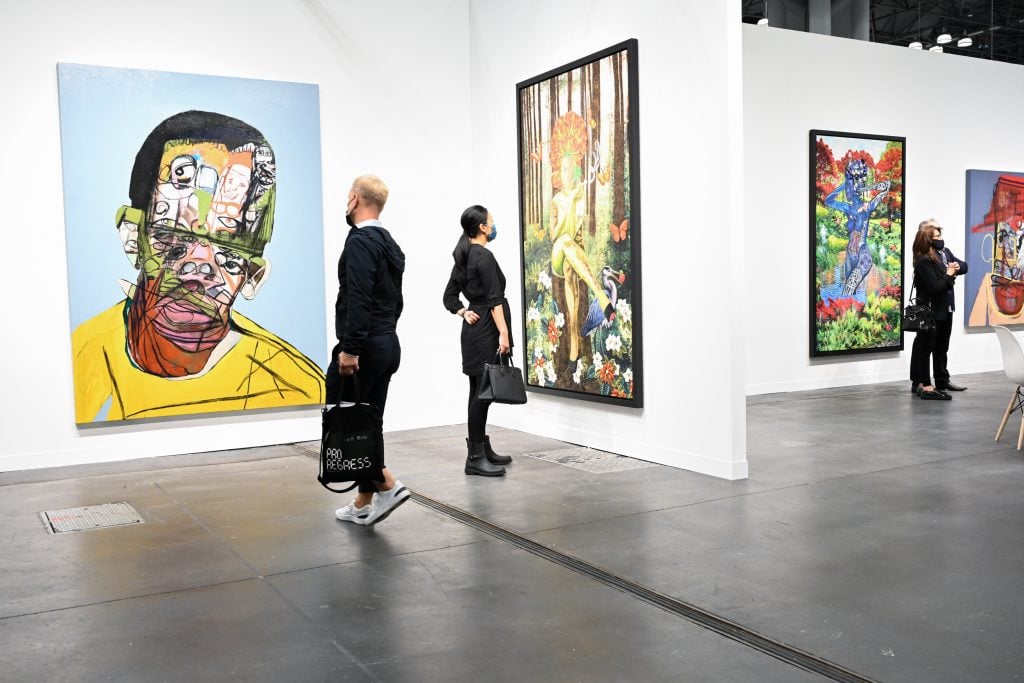
Doubts about whether it was too early for fairs to return were assuaged by strong sales and attendance.

Eileen Kinsella

The Armory Show’s VIP opening at its new venue in the Javits Center on the West Side of Manhattan was abuzz with a renewed sense of energy on Thursday. Just a few months ago, the same venue had served as a vaccine center, packed with nurses in white coats and National Guard members in camouflage.
Today, it was a considerably different scene. Metropolitan Museum of Art director Max Hollein, the Miami-based collectors Mera and Don Rubell, actress Rhea Perlman, and patron Agnes Gund were among those milling in the aisles. Some observers had wondered whether people would stay away from the fair due to concerns over new variants—and while the flow of visitors was measured, reports of sales were swift.
Despite the fact that more than 50 mostly European galleries chose to downgrade their participation to virtual only and defer their IRL presence to next year, more than 40 international galleries did make the trek, including those from the U.K., Iran, Mexico, Germany, and Italy. Masks were required, and vaccine cards and ID were checked at the entrance.
Dealers and visitors alike praised the spacious new layout in the dramatically overhauled Javits Center, where, for the first time, modern and contemporary exhibitors presented side by side. (In the Armory’s former home, they were separated across two piers.)
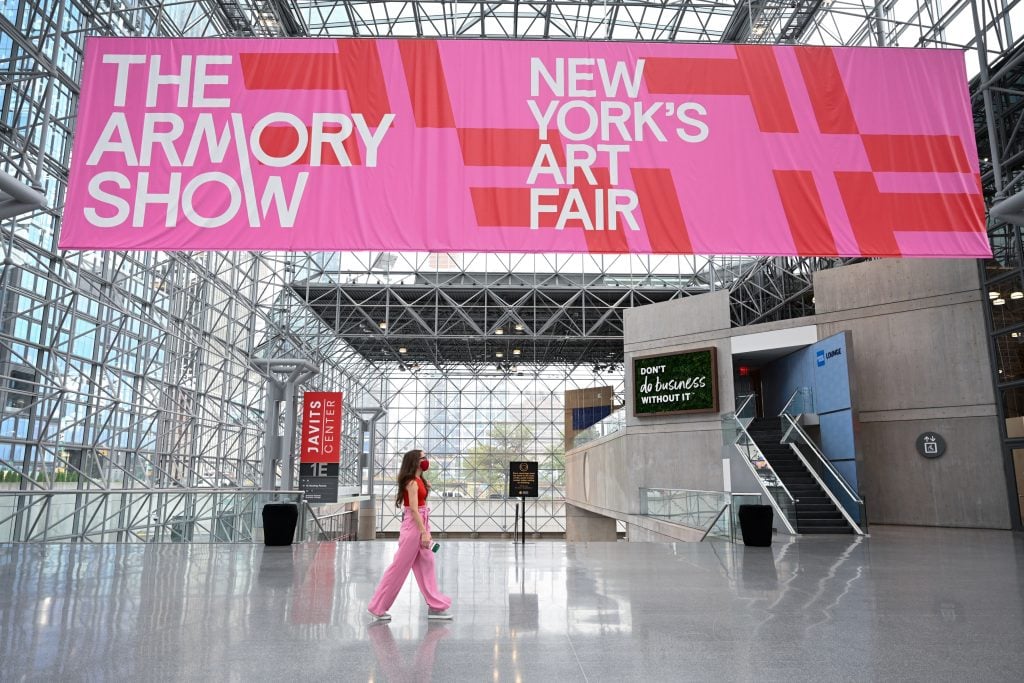
Installation view, the Armory Show 2021. Photograph by Casey Kelbaugh
“I do get energized,” said art dealer Marianne Boesky, who initially planned to opt out of this year’s fair but then became convinced by the selection committee, of which she was formerly a longtime member. “There are a lot of people here. They miss art in person. I like the timed entry—it’s a pace that’s really human, and nice.”
Boesky shared a booth with the trend-spotting Detroit gallery Library Street Collective. Each gallery brought two artists, a way of keeping it “simple,” Boesky noted—and perhaps a reflection of the somewhat scaled art-fair expectations amid ongoing shipping challenges and expenses.
Among the early sales was Furs and Concrete (2021), a new painting by the in-demand young artist Jammie Holmes, which sold for $65,000 to a museum in China.
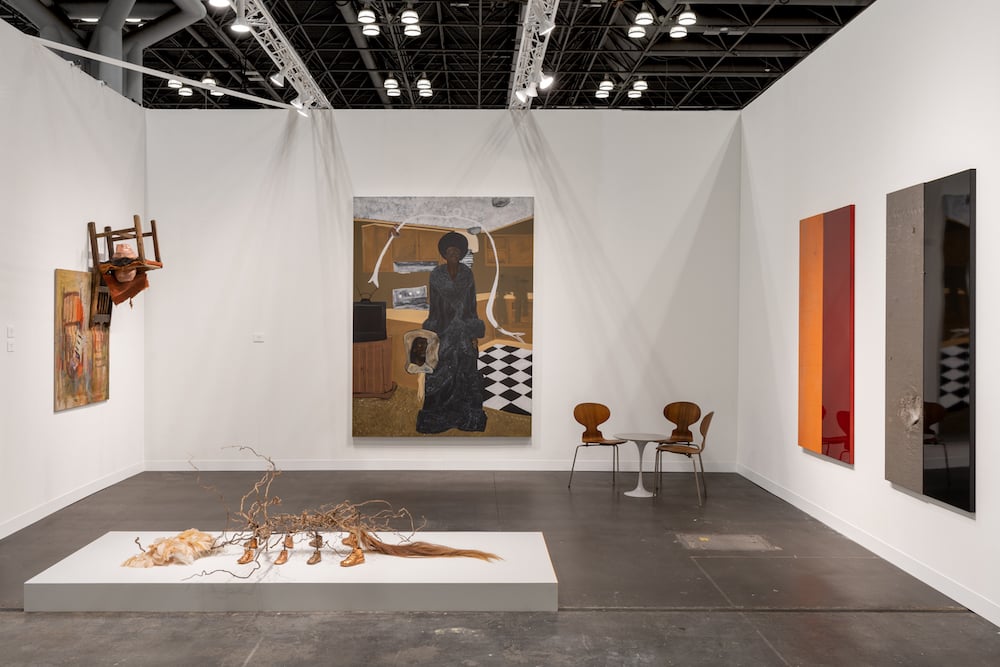
Installation view of Marianne Boesky Gallery and Library Street Collective at the Armory Show, with Jammie Holmes’s work at center. Courtesy of the galleries.
While Boesky only had to make the trip a few blocks north, some dealers came from considerably further away. “I didn’t want to miss this chance,” said Lorenzo Ronchini, owner of the eponymous London gallery. The only way to make it work was to spend 14 days in quarantine, which he did in Mexico before coming to the U.S.
“It’s my job. If you have to quarantine somewhere else, you have to do it. But I’m so happy to be here,” he said. “It’s a new venue and there is good energy.” (Ronchini also participated in Art Dubai in March.) During the VIP preview, he sold three works by Brooklyn-based artist Rebecca Ward.
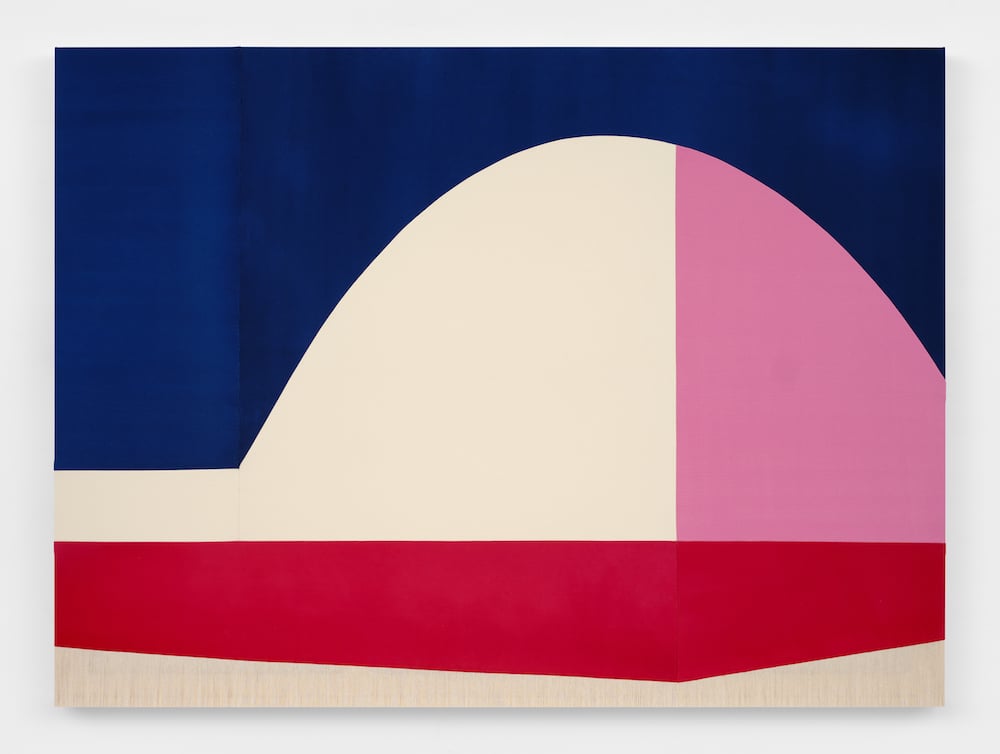
Rebecca Ward, full term (2021). Image courtesy the artist and Ronchini Gallery, London.
“We really appreciate the effort,” Armory Show director Nicole Berry told Artnet News about Ronchini and others, adding that the “international presence” is key to the look of the fair.
As opening day approached, Berry said, angst largely turned into excitement. “The VIP team has been inundated and, as it got closer, people made the decision to do it. There is that pent-up demand and people are saying how wonderful it is to be back.”
Everything went smoothly for San Francisco dealer Jessica Silverman, who said installation took a mere three hours and praised the new venue as “fantastic.” Like many dealers, Silverman secured some sales in advance after sending out an email blast with selections. The pace continued today with works selling at prices ranging from $15,000 to $75,000. “Business just continues to be very fast, and people are very decisive,” Silverman said.
The artists on display—Clare Rojas, Davina Semo, and Hayal Pozanti—all have large public artworks in New York City right now: two with the Public Art Fund and one, Pozanti, with a massive installation at the New York Public Library’s new Stavros Niarchos Center. Silverman aimed to complement these projects with more domestic-scaled pieces.
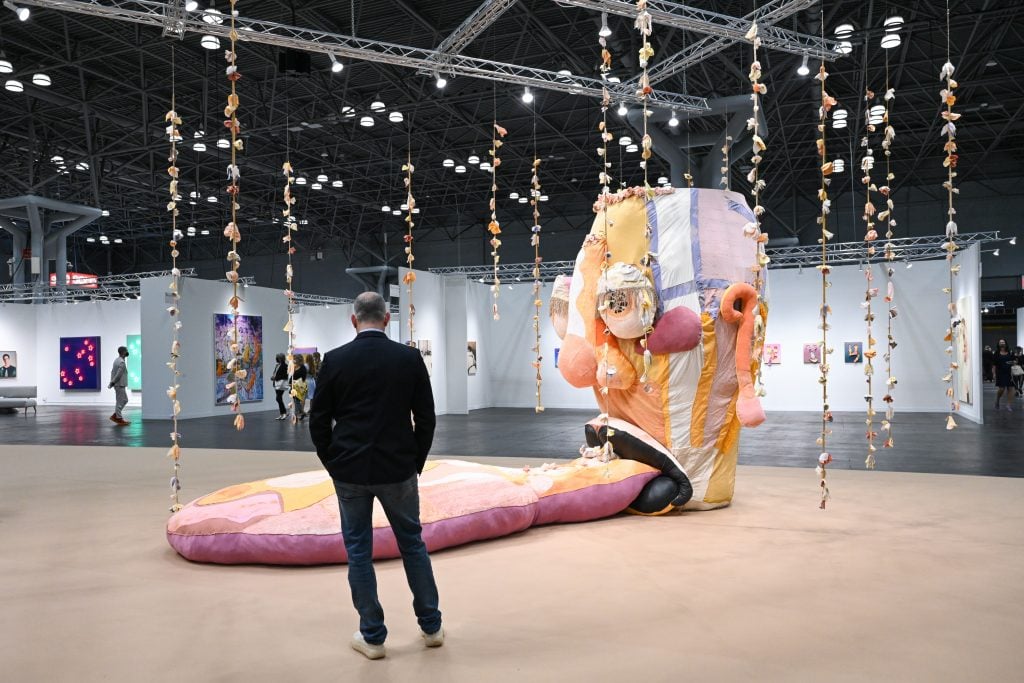
Installation view, the Armory Show. Photograph by Casey Kelbaugh
New York dealer Sean Kelly, who sold work by artists including Landon Metz, Hugo McCloud, Shahzia Sikander, Dawoud Bey, Wu Chi-Tsung, and others, used the fair to promote a new initiative called the Artist Audio Experience. When a viewer aims his or her smart phone at the label of a nearby work, they can hear the artist’s voice at the moment they created it (or as close to the time of creation as possible). The goal is to encourage viewers to slow down and look—the audio file is only active when they are near the piece.
“Because a lot of people are not traveling abroad, it made perfect sense for us to participate in Armory, and it’s so nice to see everyone in person,” New York dealer Tina Kim said.
First-day sales at Tina Kim included a brilliant orange canvas, Conjunction 20-49 (2020), by Dansaekhwa artist Ha Chong-Hyun in the range of $150,000 and a painting by Park Seo-Bo, Ecriture No. 040602 (2004), in the range of $110,000 to $130,000. The gallery also sold a new bronze sculpture by Ghada Amer and a painting by the late Kim Tschang-Yeul, among others.
“It has been great to see familiar faces again, mainly from New York and U.S.-based collectors,” said Daniel Roesler, partner and senior director of Nara Roesler, which has branches in New York and in Rio de Janeiro and São Paulo in Brazil.
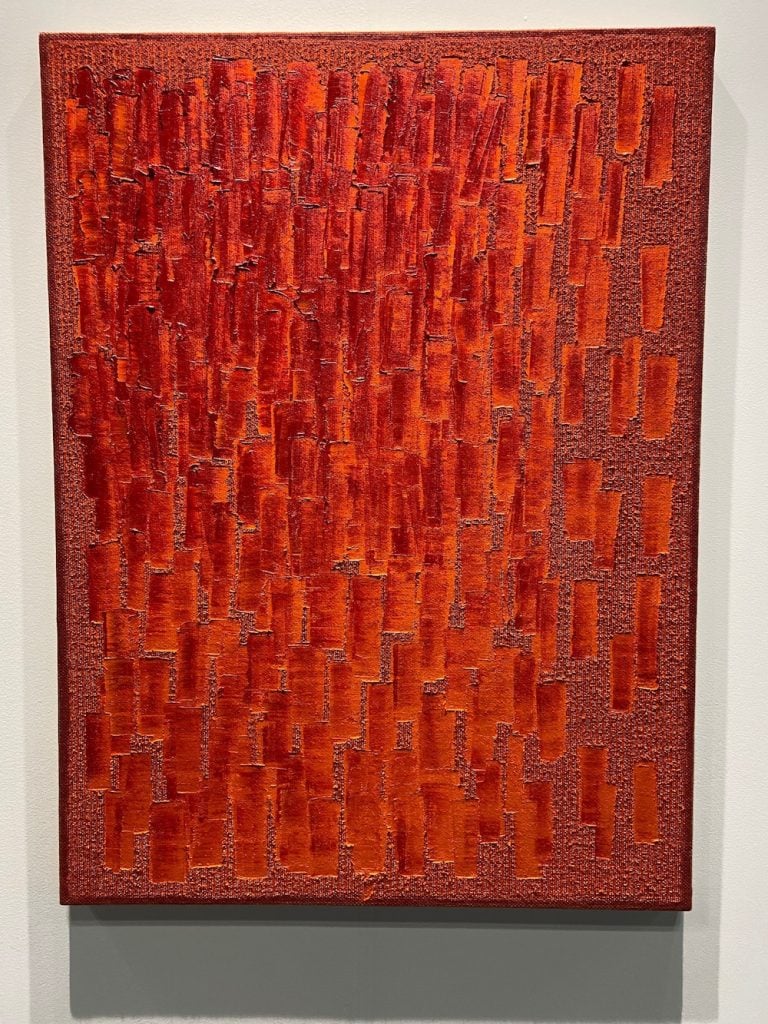
Ha Chong-Hyun, Conjunction 20-49(2020) at Tina Kim Gallery at The Armory Show 2021. Photo by Eileen Kinsella.
Sales at the gallery included a Julio Le Parc painting, Serie 22 n° 3 (1971/2020), priced at €62,000 ($73,350), a Vik Muniz archival inkjet print priced at $60,000; Fabio Miguez’s Untitled, from Volpi series (2020) for $60,000; and a number of other works priced between $30,000 and $50,000.
While most sales hovered in the five-figure range, some cracked the six-figure mark. Marc Selwyn sold a work by Jay DeFeo for $875,000; Stephen Friedman Gallery sold a bronze sculpture of Kanye West by Kehinde Wiley for $170,000; and Marc Straus sold out its booth of works by Marie Watt priced at $100,000 each.
“Obviously it’s not ‘normal,'” Berry said of the proceedings, “but it feels more normal than it’s been.”